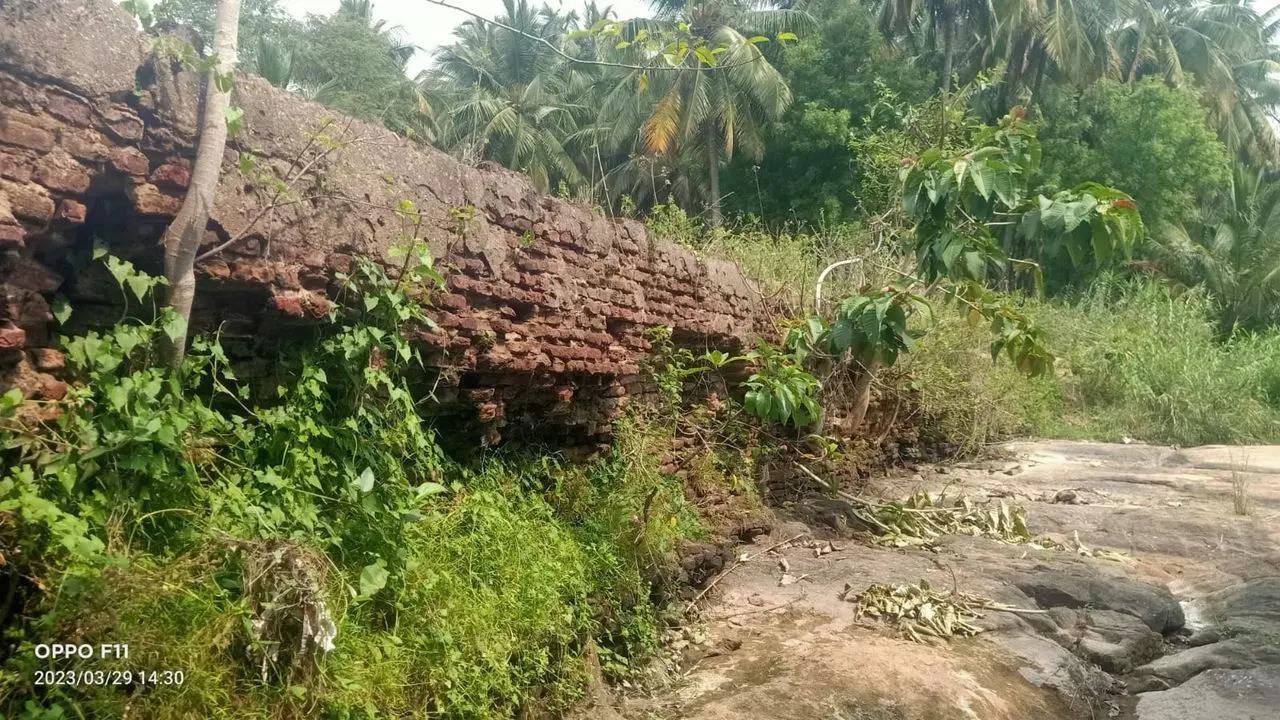CHENNAI: Students from Palani Andavar Girls College have found traces of a 1,000-year-old check dam across the river Suruli river in Dindigul district of Tamil Nadu.
Archaeologist V Narayanamoorthy said students found traces of the check dam in Porundhal near Palani during a field trip. Narayanamoorthy and college faculty members Jayanthimala and Thangam accompanied the students.
The Suruli is a tributary of the Shanmuganathi that flows in the region. It is called the Suruliyaru by locals. It originates from the Western Ghats, as a forest river and flows for a few kilometres north and then flows towards the Patchaiyaru with which it merges. Before the merger, it flows down a small hillock known as Sundaikaithatti Karadu towards east. It is in this place that the structure was constructed to divert the course of the river. It was constructed for a distance of two-kilometres along the eastern bank of the river. It is now dilapidated and only traces can be found.
Narayanamoorthy said the check dam could have been constructed in a move to make it flow directly towards north into the tanks known as Ammapattiyan Kulam and Kumarasamudira Kulam, which helps irrigate a large area of land in the region.
Also, there are three tanks on the eastern side of the river. He said that these tanks would have been filled through the sluices on this check dam. Now, there are remains of only one sluice. Five sluices could have existed, he said. The river experiences heavy flash floods which could have destroyed the other sluices.
What remains of the dam now is a 50-metre stretch.
The check dam was constructed with huge rocks and bricks. The size of the bricks measured 23X12X5 cm. Bricks with this measurement size appear in the 10th century constructions in this region. Hence, it can be determined to belong to the 10th century AD, he said.
Also, he said that there was the presence of iron ore (hematite) having been poured, in boiling form in some places along the course of this river. It may indicate that the builders used it at the points, where this river turns, to prevent erosion.
This dam is an example for the water management skills of the ancient people who lived here, he said.
Archaeologist V Narayanamoorthy said students found traces of the check dam in Porundhal near Palani during a field trip. Narayanamoorthy and college faculty members Jayanthimala and Thangam accompanied the students.
The Suruli is a tributary of the Shanmuganathi that flows in the region. It is called the Suruliyaru by locals. It originates from the Western Ghats, as a forest river and flows for a few kilometres north and then flows towards the Patchaiyaru with which it merges. Before the merger, it flows down a small hillock known as Sundaikaithatti Karadu towards east. It is in this place that the structure was constructed to divert the course of the river. It was constructed for a distance of two-kilometres along the eastern bank of the river. It is now dilapidated and only traces can be found.
Narayanamoorthy said the check dam could have been constructed in a move to make it flow directly towards north into the tanks known as Ammapattiyan Kulam and Kumarasamudira Kulam, which helps irrigate a large area of land in the region.
Also, there are three tanks on the eastern side of the river. He said that these tanks would have been filled through the sluices on this check dam. Now, there are remains of only one sluice. Five sluices could have existed, he said. The river experiences heavy flash floods which could have destroyed the other sluices.
What remains of the dam now is a 50-metre stretch.
The check dam was constructed with huge rocks and bricks. The size of the bricks measured 23X12X5 cm. Bricks with this measurement size appear in the 10th century constructions in this region. Hence, it can be determined to belong to the 10th century AD, he said.
Also, he said that there was the presence of iron ore (hematite) having been poured, in boiling form in some places along the course of this river. It may indicate that the builders used it at the points, where this river turns, to prevent erosion.
This dam is an example for the water management skills of the ancient people who lived here, he said.
